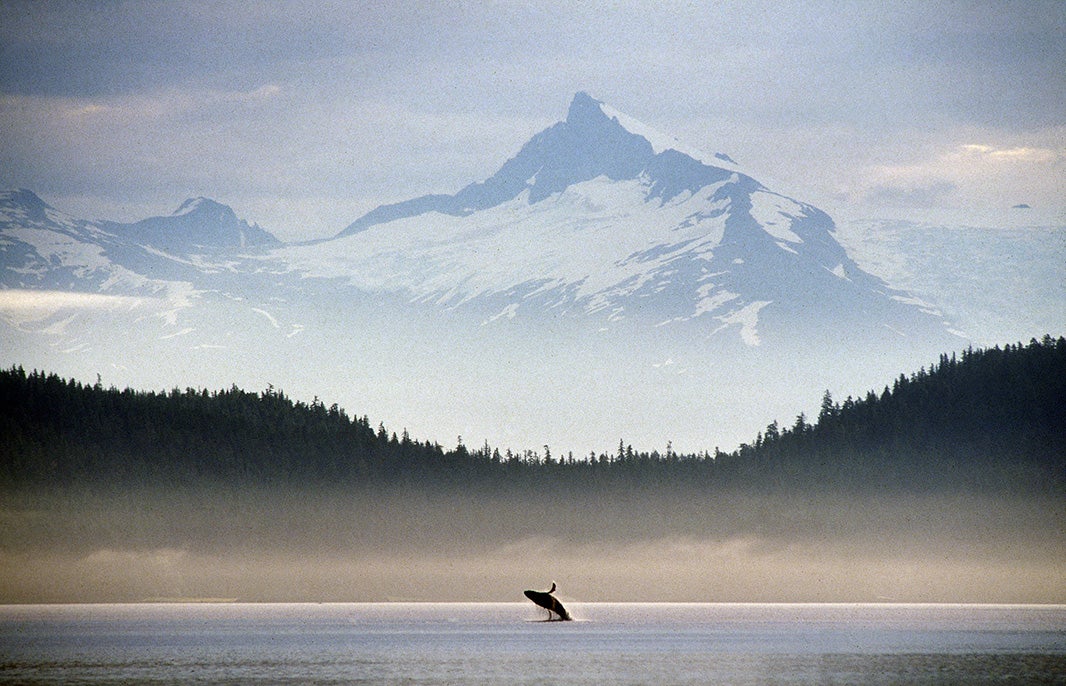Once Again, Our Largest National Forest Is Under Attack
Alaska's state government has asked the U.S. Department of Agriculture to consider overturning hard-earned protections for the Tongass.

This page was published 7 years ago. Find the latest on Earthjustice’s work.
This blog post was written by Tracy Coppola and former Earthjustice intern Paige Rodrigues.
Update, April 10, 2018: After this blog post was originally published, environmental champions in Congress stood up for the Tongass and the Roadless Rule, ensuring that attacks on our largest national forest did not make it into the omnibus spending bill unveiled March 21. But now Alaska’s government has asked the U.S. Department of Agriculture to exempt the Tongass from Roadless Rule protection. The Roadless Rule helps to prevent more damaging road building and old growth logging in this irreplaceable wilderness. Nearly 100 national groups have signed a letter opposing this latest attack.
Original post, December 1, 2017: At 17 million acres, the Tongass National Forest in Alaska is the largest national forest in the country. Just this September, Earthjustice won the latest round in a 16-year court battle to preserve this wild land of glaciers, fjords and old-growth rainforest. This ensures that the millions of salmon that spawn in the clear streams, the many species of wildlife that depend on intact wild forests, and the nearly 1 million visitors the Tongass receives each year will continue to fuel the local economy and way of life.
But now the forest is under attack again—this time from Congress.
Legislators will soon vote on a year-end spending bill riddled with poisonous provisions, including two introduced by Sen. Lisa Murkowski (R-AK). One would gut Roadless Rule protections for Alaska’s national forests (the Tongass and the Chugach). Another would repeal recent changes to the Tongass forest plan protecting high-value habitat like roadless areas and transitioning the Tongass slowly away from old growth logging.
The Roadless Rule is one of the most comprehensive and publicly supported conservation measures of the last century. It protects nearly 50 million acres of wild forests in the U.S. from logging and new logging roads. These protected national forest lands provide clean drinking water for 60 million people. The Tongass and Chugach together make up more than a quarter of these “roadless” lands nationwide.
The reality is that eliminating roadless protections will not revitalize an uncompetitive timber industry that depends on millions of dollars of taxpayer subsidies. Roughly two-thirds of the Tongass isn’t woodland at all, but bare rock, glaciers, alpine meadows, open muskeg, and slopes shorn by avalanches, with most of the remaining land being too high, cold or soggy to support the big trees sought by the timber industry. The most economically valuable big-tree stands were unsustainably cherry-picked in a pulp mill boom from the 1960s to the ‘90s, and it will be hundreds of years before they again become diverse old growth forests.
Given its remote location, logging in the region is extremely unprofitable. Road construction and maintenance in the Tongass is a massive expense for taxpayers. The Roadless Rule was adopted in large part to help control a multi-billion-dollar road maintenance backlog. From 2008 through 2013, the Forest Service spent $139.1 million for timber sales in the Tongass that brought returns of only $8.6 million. In short, taxpayers are losing 93 cents for every dollar spent selling ancient Tongass trees.
Taxpayers are losing 93 cents for every dollar spent selling ancient Tongass trees.
The protection of old-growth forests in the remote backcountry areas of Southeast Alaska is essential for the region’s tourism, recreation and fishing industries, which account for 30 times more jobs than the small but destructive timber industry. The Tongass produces most of the salmon in Southeast Alaska. These sustainable industries are Alaska’s future. They have long surpassed industrial-scale logging as the region’s main economic drivers, and they depend on healthy watersheds and abundant fish and wildlife habitat.
The vibrant sustainable industries and the fish and wildlife of Southeast Alaska are more important than the demands of the timber industry to open some of our nation’s greatest remaining old growth forests to clear-cut logging at public expense. Urge your members of Congress to defeat these policy changes. Remind them that the Tongass is not for sale, the Roadless Rule must remain intact, and that our public lands deserve to be valued over illogical industry wish lists.
Read more about the history of the Roadless Rule fight here.
Opened in 1978, our Alaska regional office works to safeguard public lands, waters, and wildlife from destructive oil and gas drilling, mining, and logging, and to protect the region's marine and coastal ecosystems.
Established in 1989, Earthjustice's Policy & Legislation team works with champions in Congress to craft legislation that supports and extends our legal gains.